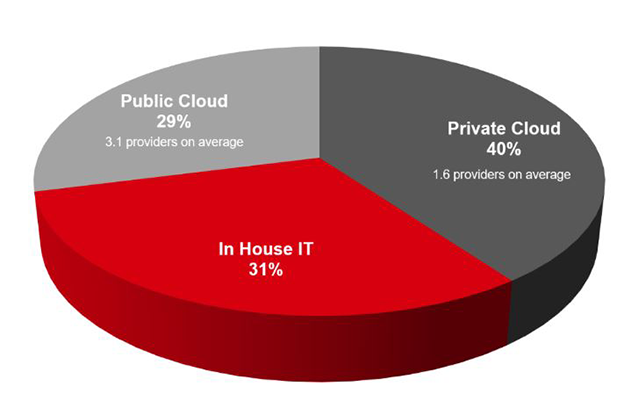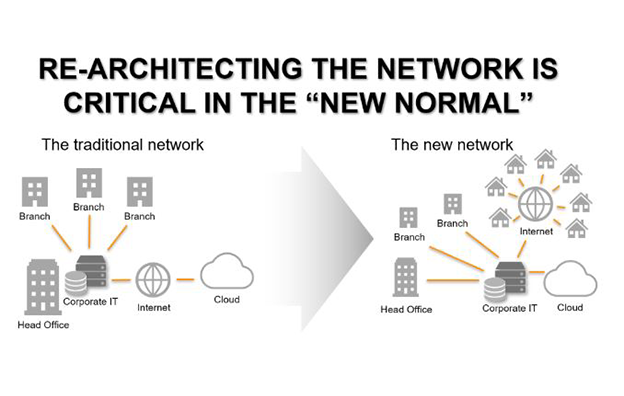By Steve Martin, Head of Channels
Many organisations are putting their IT infrastructure under the microscope to address a myriad of challenge that were unthinkable just four months ago.
What started out as a massive effort to tread water during a ‘temporary’ crisis, evolved into a global understanding that the world has changed forever and it is time to rethink and pivot, in order to innovate and thrive as we enter a new era.
Having discovered that remote working is not as disruptive to productivity as might have been expected, large organisations have already started thinking about what a permanent work from home policy might look like.
There are some startling stats about the future of the workplace based on the current precedent. MIT research showed an estimated 34% of employees are currently working remotely. Many will never return while 74% of organisations surveyed by Gartner are planning for some workers to be permanently remote.
Meanwhile, research from Global Workplace Analytics showed that 77% of employees want to continue working from home at least once a week. 16% of all staff don’t want to come back to the office at all, a figure that would be much higher for knowledge workers. Only 6% say they don’t want to work from home in the future.
Logically, if this approach becomes permanent, many corporations will consider downsizing their commercial real estate commitments to better align costs with future requirements. This then begs the question; is there still a need to have large amounts of IT infrastructure on-premises when the staff and customers being serviced are no longer in the same physical location?
The on-premise data centre acts as an anchor, tying the organisation to its physical premises because of the complexity and cost of relocating it. As real estate strategy evolves, companies will have to decouple the locations of people and IT infrastructure as part of their shift to more agile and flexible business models.
Making smart decisions
Now is the time to make smart decisions about how to move forward; about how to best take advantage of the investments that have already been made in digital transformation, whilst ensuring future strategy supports optimal performance and ROI.
With so many choices available about how to advance cloud architectures, the key to success becomes cost optimisation, availability, and performance as well as the agility to change direction quickly when required.
In an era where data is the most valuable resource, and technology is at the heart of innovative change, it has never been a more important time for organisations to be prudent about the way they approach their Hybrid Multi-Cloud architecture.

Recent research showed that, on average, nearly 70% of workloads now take place in cloud platforms.
In reality, Hybrid Cloud is now Multi-Cloud. Recent research from TECHnalysis showed that 31% of workloads are still being run on in-house infrastructure with the remainder operating on external private cloud platforms (40% – with an average of 1.6 different providers) and public cloud platforms (29% – 3.1 providers).
While there are clear some short-term hurdles for many customers as they re-invent strategies to ride out the current economic climate, longer term conversations show that technology will continue to see sharpened focus on digital transformation as the route to recovery.
By leveraging flexible connectivity within a diverse national cloud ecosystem there is scope for organisations to reduce risk of downtime, cut costs and effectively respond to change as their staff and customer expectations for optimal digital experience extends.
In a new world of remote working and mandated social distancing, the way you design, deploy, and manage IT infrastructure is the success factor in staying connected to your people, partners and customers. With the likelihood of some branch offices closing, head office floorspace either being reduced or relocated, considerable thought needs to be given to the “new normal” network and IT topology.

Traditional infrastructure and connectivity strategy [LEFT] becomes unpredictable, costly, and congested. Relying on the Internet for cloud connectivity won’t deliver the stability required in the new Multi-Cloud and work-from-anywhere world. Centralising corporate digital infrastructure closer to the clouds that drive business [RIGHT] provides infinitely more flexibility and scalability. Connecting directly to clouds from within a colocation ecosystem reduces costs, delivers dramatic performance improvements around latency and jitter while also better supporting a distributed workforce.
There is no playbook for the type of change that has been implemented in the last three months and for every organisation, the challenges have been different.
This rush to deal with a new reality has manifested in huge new demand for cloud platform connectivity including more comprehensive redundancy, back-up, and disaster recovery planning. At NEXTDC we have seen a significant increase in cloud connectivity requirements, as customers bolster resilience planning and seek flexible and rapid deployment options.
Hybrid Cloud goes mainstream
In an economic environment where flexible, agile and resilient IT platforms are the foundation for survival, innovation and disruption, it is time for Multi-Cloud to shine. With businesses on average using three public clouds and one or two private clouds, the core value proposition of this type of architecture is flexibility to shift suitable workloads between private and public clouds as computing needs and costs change.
It represents a great risk mitigation strategy because it gives organisations greater flexibility to scale quickly while also extending deployment options. Clouds now represent secure and resilient platforms that will help organisations innovate and change.
Multi-Cloud environments give you a range of levers to adjust in alignment with evolving business strategy while reducing infrastructure management overheads around power, security, and connectivity.
The reality is two thirds of your IT workloads are likely off-site today in public or private clouds and thus, it makes sense to place your in-house IT right next to those clouds, rather than remaining isolated in an on-premise facility. Having your critical systems located in a premium data centre makes the whole process of downsizing or moving the office much easier and less expensive.
Every time there has been an economic downturn over the last 100 years, technology thrives, and this is certainly the case with this pandemic-driven recession. Responding rapidly to changing commercial environments where the old way of doing things is no longer sufficient also presents great opportunities to innovate and disrupt.
Look at the rapid rise of companies like Google, Facebook, and Netflix – after the Global Financial Crisis of 2008-09, or Zoom in the present, to see that great things can emerge from the ashes of unforeseen global events.
Organisations that best leverage today’s megatrends – such as resilient Multi-Cloud architecture and flexible connectivity – will pioneer the next wave of technology. By making best use of Multi-Cloud environments, as-a-service providers, flexible connectivity solutions and the data centres where they congregate, they will not only survive the current crisis, they will thrive during the inevitable rebound.
Reach out to our experts for more information about what optimised Multi-Cloud looks like for your organisation.


